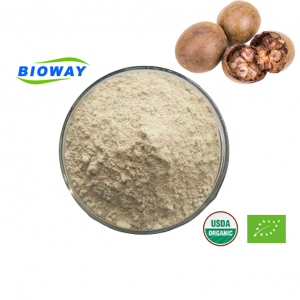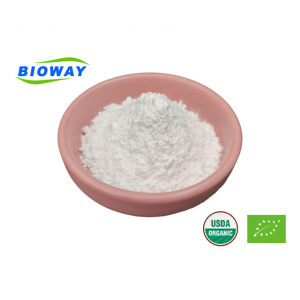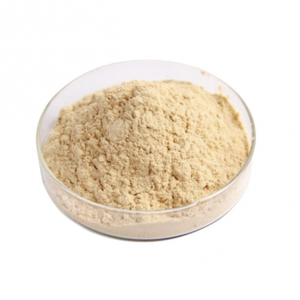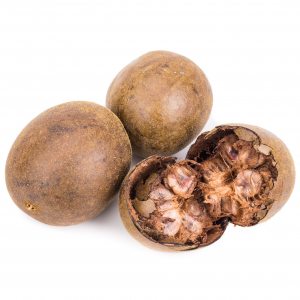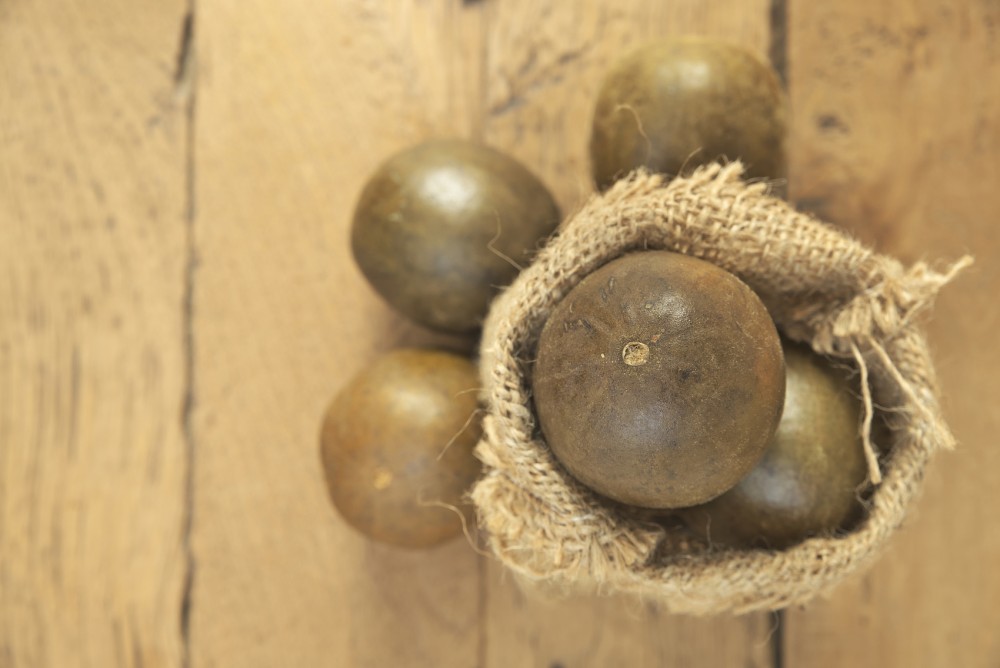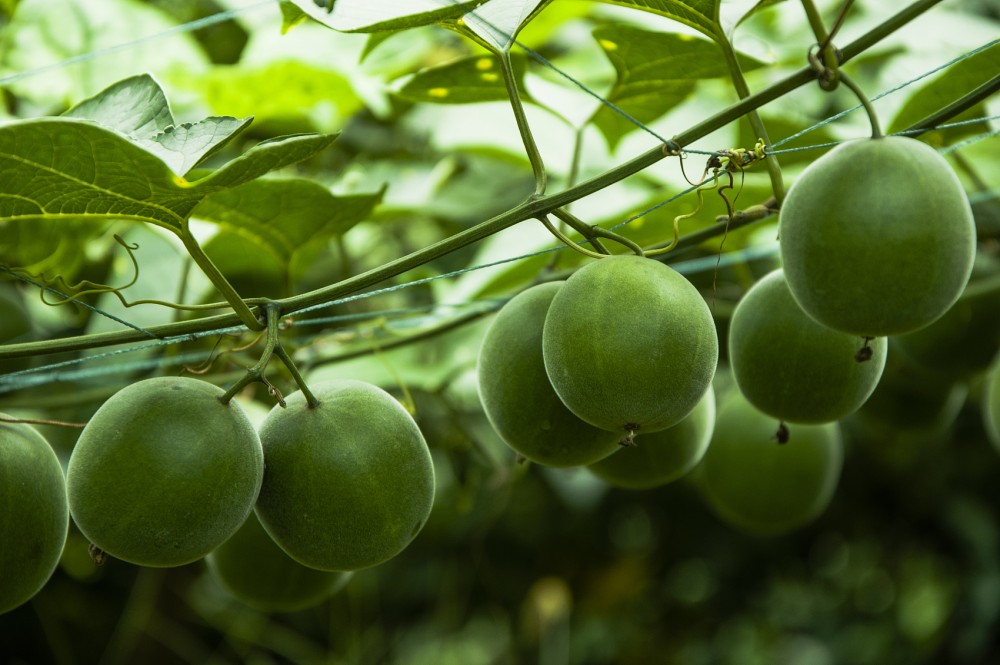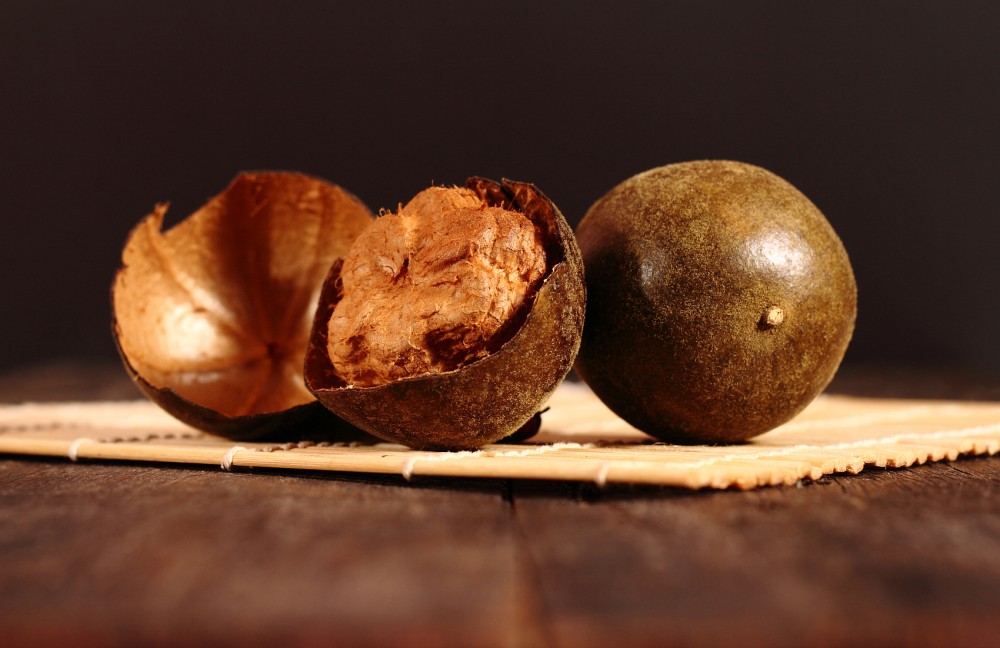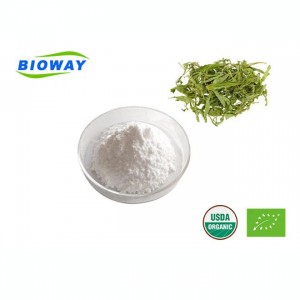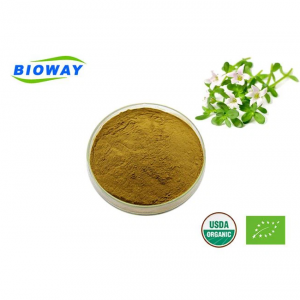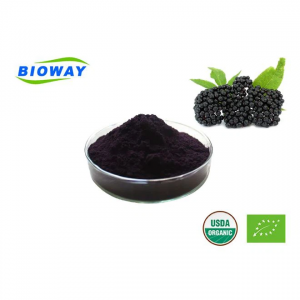Keto-friendly Sweetener Monk Fruit Extract
Monk Fruit Extract is a natural sweetener that comes from the monk fruit, also known as Luo Han Guo or Siraitia Grosvenorii, which is a small round fruit native to southern China. It has been used for centuries as a natural sweetener and for medicinal purposes. It is a zero-calorie sweetener, making it a popular choice for those following a keto diet or looking to reduce their sugar intake.
The monk fruit extract is considered keto-friendly because it does not impact blood sugar levels or cause an insulin response. It is also not metabolized by the body, so it does not contribute to carbohydrate or calorie counts. This makes it an excellent alternative to traditional sugar for those on a low-carb or ketogenic diet.
One thing to note is that monk fruit extract is much sweeter than sugar(150 to 300 times), so you will need to adjust the amount used in recipes or beverages accordingly. Many products on the market combine monk fruit extract with other natural sweeteners like erythritol or stevia to balance the sweetness and provide a more rounded flavor profile.
Overall, monk fruit extract can be a great option for anyone looking to satisfy their sweet cravings on a keto diet without derailing their low-carb goals.
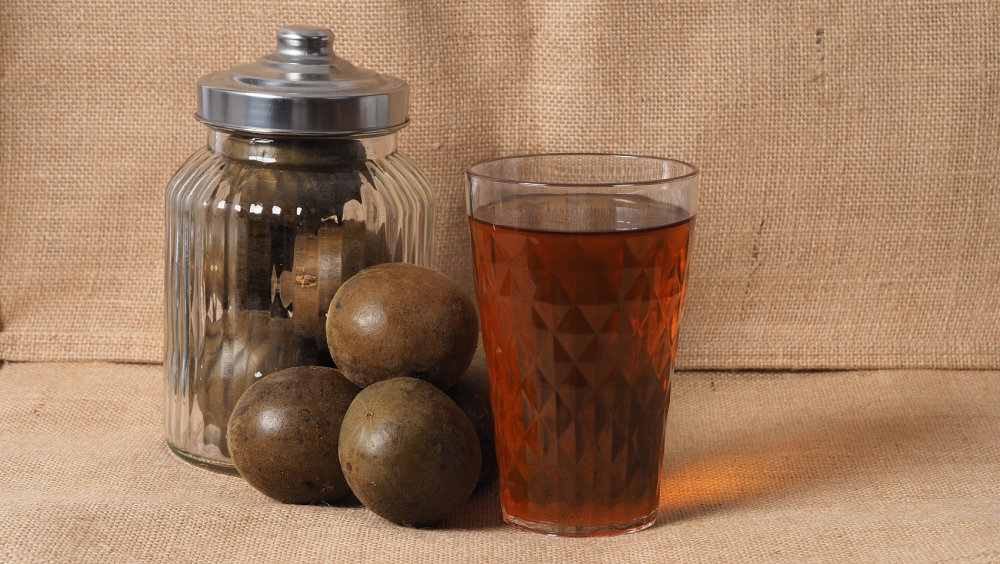
| Product Name | Luo Han Guo Extract / Lo Han Guo Powder |
| Latin Name | Momordica Grosvenori Swingle |
| Part Used | Fruit |
| Appearance | Light Yellow to Milk White Fine Powder |
| Active Ingredients | Mogroside V, Mogrosides |
| Specification | Mogroside V 20% & Mogrosides 80% |
| Mogroside V 25% & Mogrosides 80% | Mogroside V 40% |
| Mogroside V 30% & Mogrosides 90% | Mogroside V 50% |
| Sweetness | 150~300 times as sweet as sucrose |
| CAS No. | 88901-36-4 |
| Molecular Formula | C60H102O29 |
| Molecular Weight | 1287.44 |
| Test Method | HPLC |
| Place of Origin | Shaanxi, China (Mainland) |
| Storage | Store in a cool & dry area, keep away from direct light and heat |
| Shelf Life | Two years under well storage situation and stored away from direct sunlight |
Here are some specific features of keto-friendly sweetener monk fruit extract:
1. Zero calories: Monk fruit extract itself has no calories, making it an ideal sweetener for those on a keto diet who are looking to reduce their caloric intake.
2. Low in carbs: Monk fruit extract is very low in carbohydrates, making it suitable for those following a low-carb or ketogenic diet.
3. No impact on blood sugar: Monk fruit extract does not raise blood sugar levels or cause an insulin response, which is important for maintaining ketosis.
4. Natural and plant-based: Monk fruit extract is derived from monk fruit, a plant native to Southeast Asia. It is a natural and plant-based sweetener, making it a popular choice for those seeking healthier alternatives to artificial sweeteners.
5. High sweetness intensity: Monk fruit extract is much sweeter than sugar, so a little goes a long way. It is typically used in small amounts to achieve the desired level of sweetness.
6. No aftertaste: Some artificial sweeteners can leave an unpleasant aftertaste, but monk fruit extract is known for its clean and neutral flavor profile.
7. Versatile and easy to use: Monk fruit extract can be used in a variety of recipes, including beverages, desserts, and baked goods. Many products include it as an ingredient in powdered or liquid form for easy incorporation into recipes.
8. Non-GMO and gluten-free: Many monk fruit extract sweeteners are made from non-GMO monk fruit and are gluten-free, catering to a range of dietary preferences and restrictions.
These features make monk fruit extract a popular choice for those on a keto diet who are looking for a natural and zero-calorie sweetener option.
Monk fruit extract offers numerous health benefits, especially for those following a keto diet:
1. Blood sugar control: Monk fruit extract does not raise blood sugar levels, making it a suitable sweetener for individuals with diabetes or those looking to manage their blood sugar levels. It can be used as a sugar substitute without impacting insulin response.
2. Weight management: Monk fruit extract is calorie-free and low in carbohydrates, making it beneficial for weight management. It can help reduce overall caloric intake while still satisfying sweet cravings.
3. Antioxidant properties: Monk fruit extract contains natural antioxidants called mogrosides. These compounds have been shown to have anti-inflammatory and anti-cancer effects, and they may help protect against oxidative stress caused by free radicals in the body.
4. Anti-inflammatory effects: Some research suggests that monk fruit extract may exhibit anti-inflammatory properties, which can be beneficial for individuals with inflammatory conditions or those looking to reduce inflammation in their bodies.
5. Digestive health: Monk fruit extract is not known to cause digestive issues or have a laxative effect, as some other sweeteners may have. It is generally well-tolerated and does not have a significant impact on gut health.
6. Natural and low glycemic index: Monk fruit extract is derived from a natural source and has a low glycemic index, meaning it has a minimal impact on blood sugar levels. This makes it a suitable option for individuals trying to minimize sugar intake or maintain stable blood sugar levels.
It's important to note that while monk fruit extract is generally considered safe for most people, individuals with specific health conditions or sensitivities should consult with a healthcare professional before incorporating it into their diet.
Monk fruit extract, in its keto-friendly sweetener form, can be used in various application fields. Some common application fields for monk fruit extract as a keto-friendly sweetener include:
1. Beverages: It can be used to sweeten drinks such as tea, coffee, smoothies, and homemade keto-friendly sodas.
2. Baked goods: It can be used as a sweetener in baked goods like cookies, cakes, muffins, and bread. It can be added to the dough or batter to replace traditional sugar.
3. Desserts and sweets: It can be used in puddings, custards, mousses, ice creams, and other sweet treats. It can add sweetness without the extra carbs or calories.
4. Sauces and dressings: It can be used in keto-friendly sauces and dressings like salad dressings, marinades, or BBQ sauces as a sweetener alternative.
5. Yogurts and parfait: It can be used to sweeten plain or Greek yogurts, as well as layered parfaits with nuts, berries, and other keto-friendly ingredients.
6. Snacks and energy bars: It can be added to homemade keto-friendly snack bars, energy balls, or granola bars for an added touch of sweetness.
7. Jams and spreads: It can be used for making sugar-free jams, jellies, or spreads to enjoy on keto-friendly bread or crackers.
8. Meal replacements and protein shakes: It can be used in keto-friendly meal replacements or protein shakes to add sweetness without added sugars or carbs.
Remember to check the product labels and choose a monk fruit extract sweetener without any additional ingredients that could kick you out of ketosis. Also, be mindful of the recommended serving sizes, as monk fruit extract can be significantly sweeter than sugar and may require less quantity.
Here's a simplified process flow chart illustrating the production of keto-friendly sweetener monk fruit extract:
1. Harvesting: Monk fruit, also known as Luo Han Guo, is harvested once it reaches maturity. The fruit should be ripe and have a yellowish-brown appearance.
2. Drying: The harvested monk fruit is dried to reduce moisture content and preserve its quality. This can be done through various methods such as sun drying or using specialized drying equipment.
3. Extraction: The dried monk fruit undergoes an extraction process to isolate the sweetening compounds known as mogrosides. The most common method of extraction is through water extraction, where dried monk fruit is soaked in water to extract the desired compounds.
4. Filtration: After extraction, the mixture is filtered to remove any impurities or solid particles, leaving behind a clear liquid.
5. Concentration: The filtered liquid is then concentrated to increase the concentration of mogrosides. This is typically done through heating or vacuum evaporation to remove excess water and achieve the desired sweetness intensity.
6. Purification: To further refine the monk fruit extract, any remaining impurities or undesirable components are removed through processes such as chromatography or other purification techniques.
7. Drying and Powdering: The purified monk fruit extract is dried once again to remove any remaining moisture. This results in a powder form that is easier to handle, store, and use as a sweetener.
8. Packaging: The final monk fruit extract powder is packaged in suitable containers, such as jars or pouches, to maintain its quality and protect it from moisture, light, and other environmental factors.
Please note that the specific production process may vary depending on the manufacturer and the desired quality of the monk fruit extract. It's always a good idea to check the label or contact the manufacturer directly for detailed information on a specific product.
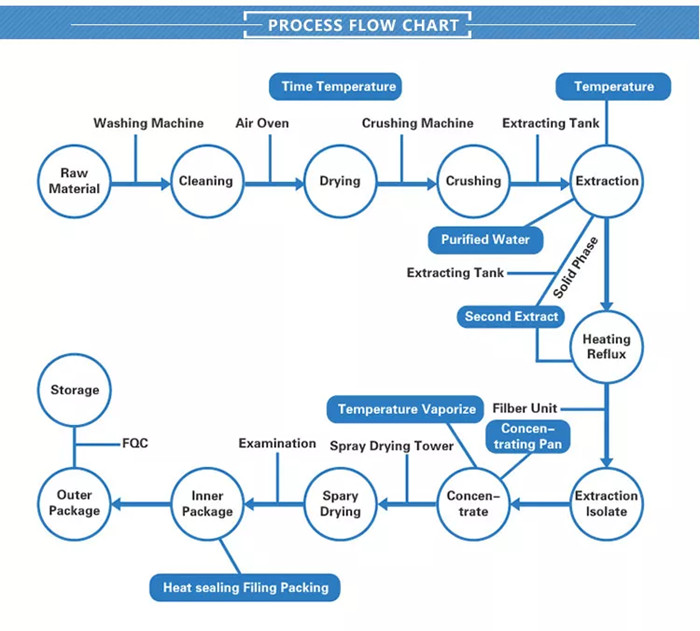

Express
Under 100kg, 3-5Days
Door to door service easy to pick up the goods
By Sea
Over300kg, Around 30 Days
Port to port service professional clearance broker needed
By Air
100kg-1000kg, 5-7Days
Airport to airport service professional clearance broker needed

Keto-friendly sweetener monk fruit extract is certified by Organic, BRC, ISO, HALAL, KOSHER, and HACCP certificates.

While monk fruit extract, specifically Nutral Sweetener, is generally considered safe for consumption and has gained popularity as a low-calorie and keto-friendly sweetener, there are a few potential disadvantages to be aware of:
1. Cost: Monk fruit extract can be relatively expensive compared to other sweeteners on the market. The cost of production and the limited availability of monk fruit can contribute to the higher price point of monk fruit extract products.
2. Availability: Monk fruit is primarily grown in certain regions of Southeast Asia, such as China and Thailand. This limited geographical distribution can sometimes result in difficulties in sourcing monk fruit extract, leading to potential availability issues in certain markets.
3. Aftertaste: Some individuals may experience a slight aftertaste when consuming monk fruit extract. While many find the taste pleasant, others may perceive it as slightly bitter or have a metallic taste.
4. Texture and Cooking Properties: Monk fruit extract may not possess the same texture or bulk as sugar in certain recipes. This can affect the overall texture and mouthfeel of baked goods or dishes that heavily rely on sugar for volume and structure.
5. Allergies or Sensitivities: Although rare, some individuals may have allergies or sensitivities to monk fruit or other components present in monk fruit extract. It's important to be mindful of any adverse reactions when trying new sweeteners for the first time.
6. Limited Research: While monk fruit extract has generally been recognized as safe for consumption by regulatory bodies like the FDA and EFSA, the long-term effects and potential health benefits or risks have not been extensively studied.
As with any food or additive, it's recommended to consume monk fruit extract in moderation. It's worth noting that individual sensitivities and preferences can vary, so it's advisable to try monk fruit extract in small amounts and observe how your body responds before incorporating it into your regular diet.
When comparing monk fruit extract and stevia as sweeteners, there are a few key differences to consider:
Taste: Monk fruit extract is known for having a subtle, fruity flavor, often described as similar to a melon. On the other hand, stevia has a more pronounced, sometimes slightly bitter aftertaste, especially in higher concentrations.
Sweetness: Both monk fruit extract and stevia are much sweeter than regular sugar. The monk fruit extract is typically 150-200 times sweeter, while stevia can range from 200-400 times sweeter. This means that you need to use much less of these sweeteners to achieve the same level of sweetness as sugar.
Processing: Monk fruit extract is derived from the monk fruit, also known as Luo Han Guo, which is a small green melon-like fruit native to Southeast Asia. The sweetening power of monk fruit comes from natural compounds called mogrosides. Stevia, on the other hand, is derived from the leaves of the stevia plant, a shrub native to South America. The sweet taste of stevia comes from a group of compounds called steviol glycosides.
Texture and Cooking Properties: Monk fruit extract and stevia may have slightly different effects on the texture and structure of baked goods. Some individuals find that stevia can have a slightly cooling effect in the mouth, which may impact the overall taste and feel of a recipe. Monk fruit extract, on the other hand, may not provide the same bulk or caramelization properties as sugar, which can affect the texture and browning in certain recipes.
Potential Health Benefits: Both monk fruit extract and stevia are considered low-calorie or calorie-free sweeteners, which makes them popular choices for people who want to reduce their sugar consumption or manage their calorie intake.
Additionally, they don't spike blood sugar levels, making them suitable for individuals with diabetes or those following a low-carb or ketogenic diet.
However, it's important to note that the long-term effects of consuming these sweeteners are still being studied, and individual responses may vary.
Ultimately, choosing between monk fruit extract and stevia comes down to personal preference in terms of taste and how they work in different recipes. Some people prefer the taste of monk fruit extract due to its fruity flavor, while others may find stevia more appealing or readily available. It might be worthwhile trying both sweeteners in small quantities to see which one you prefer and how they work in different culinary applications.


